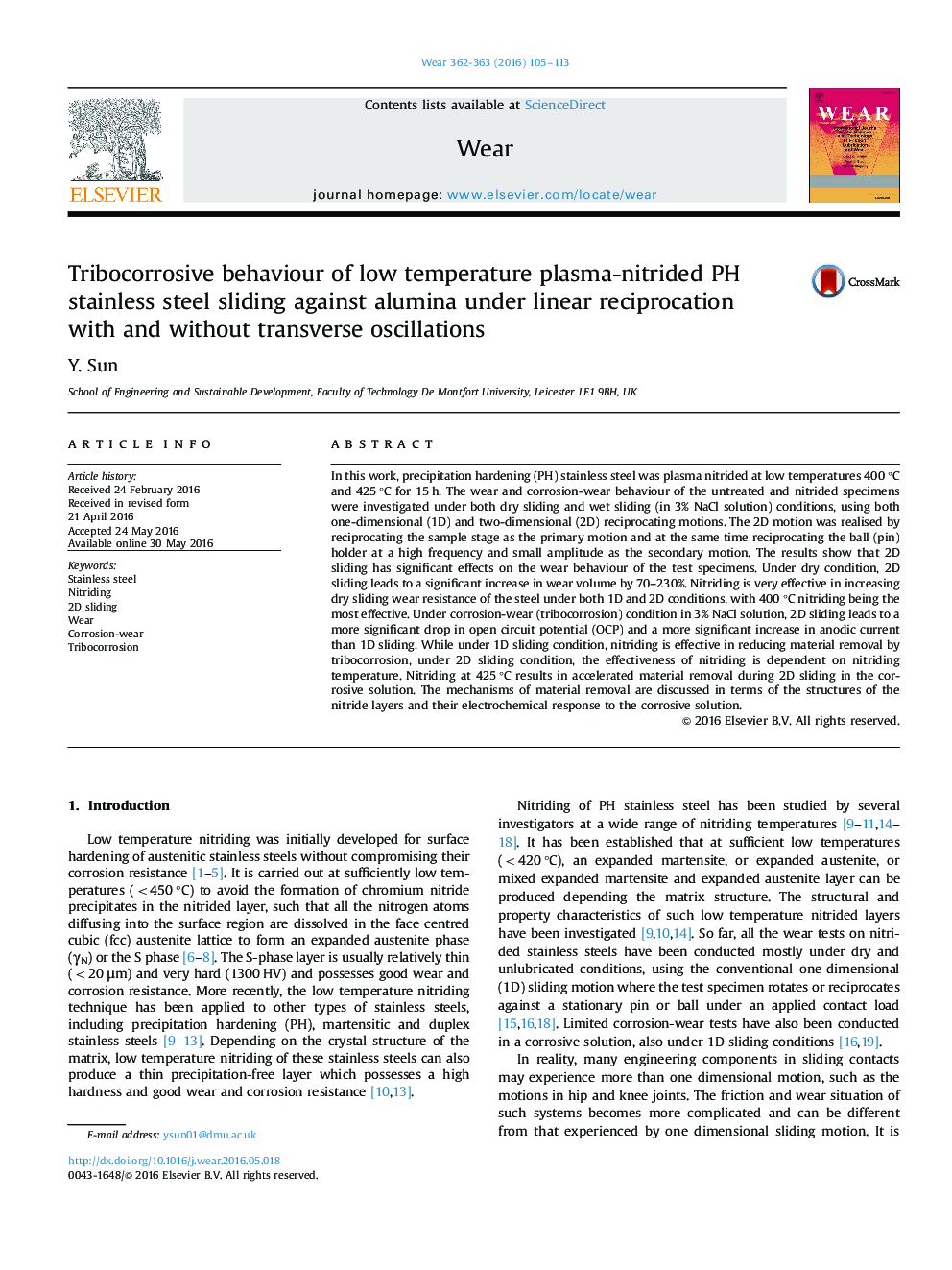| کد مقاله | کد نشریه | سال انتشار | مقاله انگلیسی | نسخه تمام متن |
|---|---|---|---|---|
| 616860 | 1454960 | 2016 | 9 صفحه PDF | دانلود رایگان |

• A two-dimensional (2D) wear test machine has been developed.
• 2D sliding leads to wider wear tracks and larger material loss than 1D sliding.
• 2D sliding has significant effect on corrosion-wear behaviour of nitrided PH steel.
• Nitriding increases corrosion-wear resistance under 1D sliding condition.
• 425 °C nitrided layer possesses the worst corrosion-wear resistance under 2D sliding.
In this work, precipitation hardening (PH) stainless steel was plasma nitrided at low temperatures 400 °C and 425 °C for 15 h. The wear and corrosion-wear behaviour of the untreated and nitrided specimens were investigated under both dry sliding and wet sliding (in 3% NaCl solution) conditions, using both one-dimensional (1D) and two-dimensional (2D) reciprocating motions. The 2D motion was realised by reciprocating the sample stage as the primary motion and at the same time reciprocating the ball (pin) holder at a high frequency and small amplitude as the secondary motion. The results show that 2D sliding has significant effects on the wear behaviour of the test specimens. Under dry condition, 2D sliding leads to a significant increase in wear volume by 70–230%. Nitriding is very effective in increasing dry sliding wear resistance of the steel under both 1D and 2D conditions, with 400 °C nitriding being the most effective. Under corrosion-wear (tribocorrosion) condition in 3% NaCl solution, 2D sliding leads to a more significant drop in open circuit potential (OCP) and a more significant increase in anodic current than 1D sliding. While under 1D sliding condition, nitriding is effective in reducing material removal by tribocorrosion, under 2D sliding condition, the effectiveness of nitriding is dependent on nitriding temperature. Nitriding at 425 °C results in accelerated material removal during 2D sliding in the corrosive solution. The mechanisms of material removal are discussed in terms of the structures of the nitride layers and their electrochemical response to the corrosive solution.
Journal: Wear - Volumes 362–363, 15 September 2016, Pages 105–113